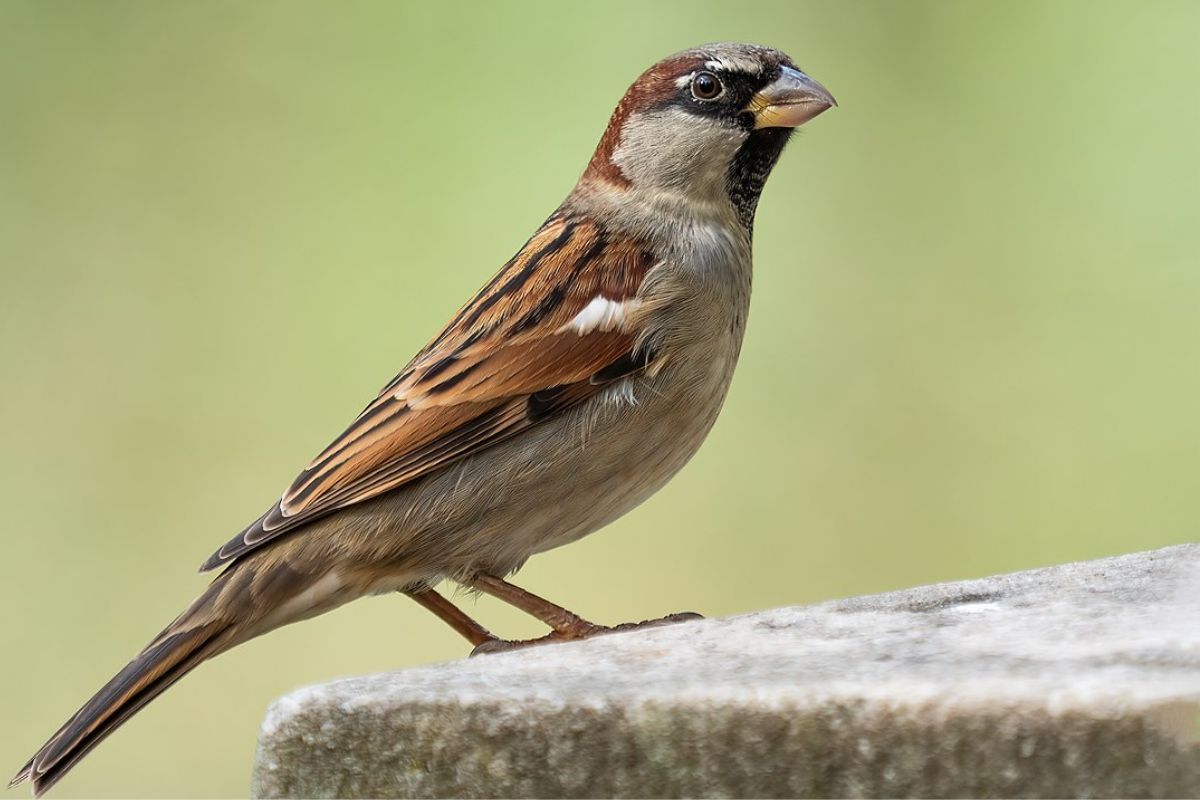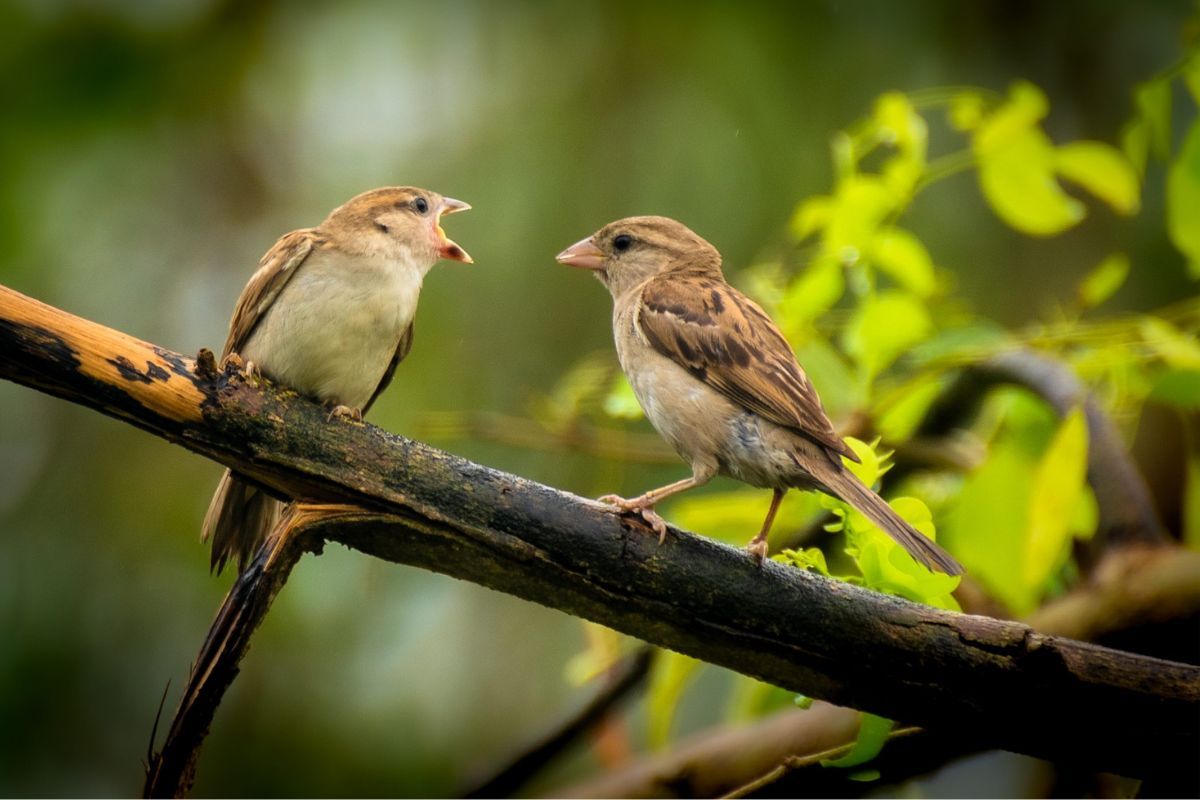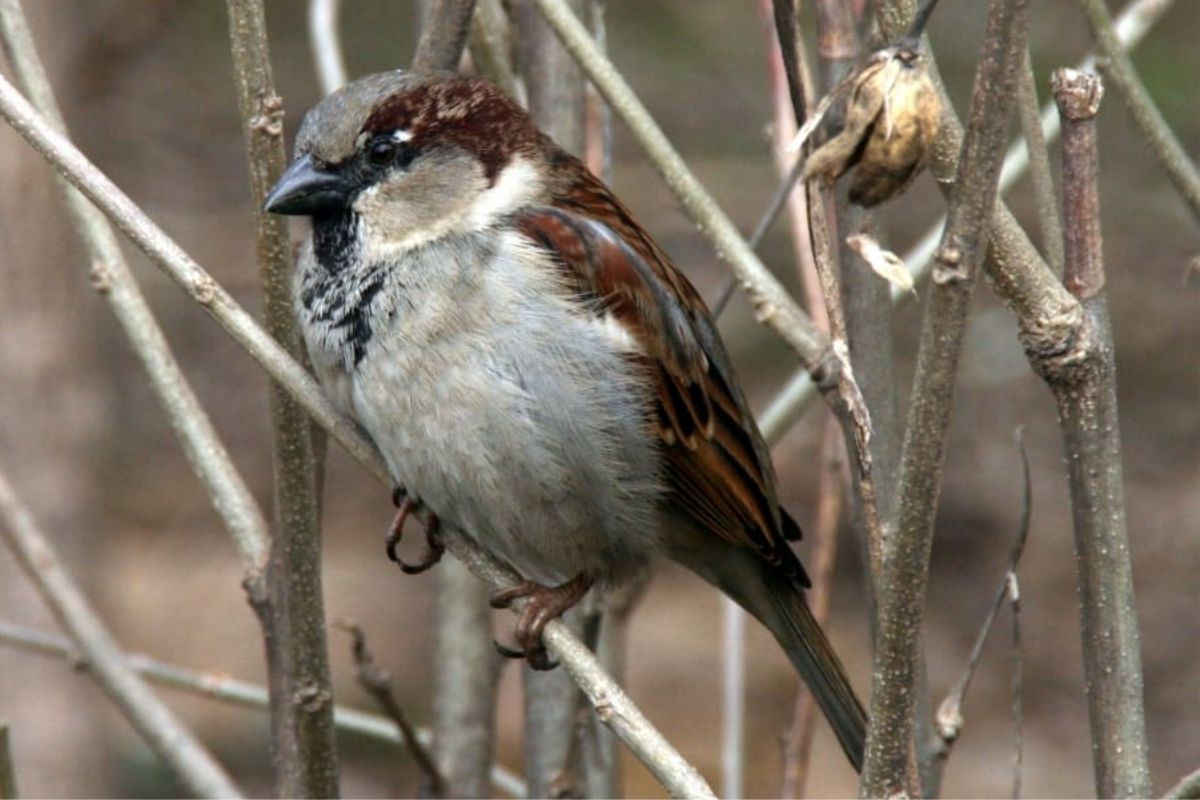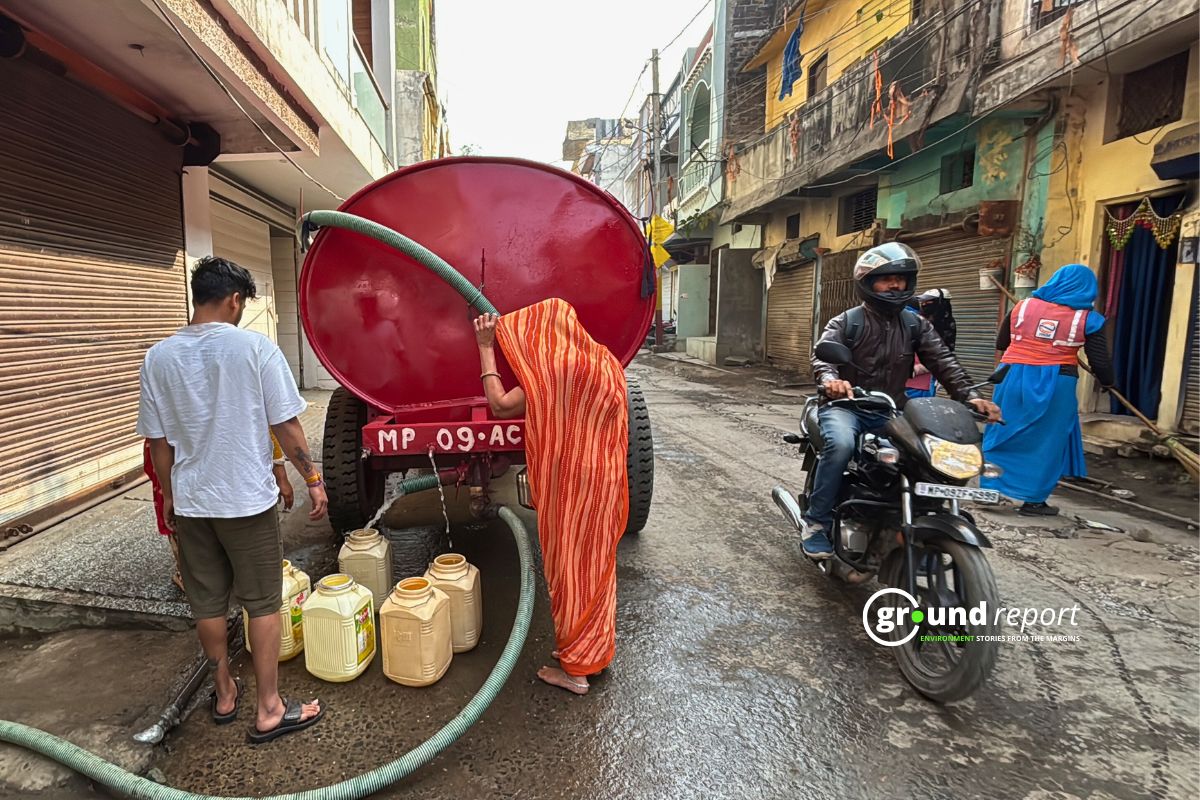Once ubiquitous in our neighbourhoods, the House Sparrow (Passer Domesticus) has experienced a significant decline in both urban and rural areas, indicating environmental degradation. This bird, known for its nesting habits in our homes and for scavenging scraps, is now classified as endangered by The International Union for Conservation of Nature (IUCN).
The Indian Council of Agricultural Research (ICAR) reports a troubling decrease in sparrow populations. In Andhra Pradesh, numbers have plummeted by 80%, with similar declines observed in Kerala, Gujarat, Jammu Kashmir, and Rajasthan. Coastal regions have been particularly affected, experiencing a decline of 70–80%.
Scientific studies affirm that house sparrows have coexisted with humans for centuries if not more. Fossil evidence from a cave in Bethlehem suggests sparrows alongside early humans dating back 400,000 years.

In 2018, a report from the Royal Society of London revealed that the relationship between humans and sparrows spans over 11,000 years. Genetic studies suggest that house sparrows, like humans, have adapted to agricultural environments, highlighting a shared evolutionary history triggered by the development of agriculture.
Environmentalists and wildlife experts emphasise that the decline in urban bird populations, especially house sparrows, over the last two decades is linked to habitat changes caused by unplanned urbanisation and pollution in major South Asian cities.
An esteemed ornithologist attributed the disappearance of house sparrows in urban areas to house construction engineers’ oversight in accommodating space for these birds in designs.
“House sparrows nest in thatched houses, but urban and rural areas no longer provide suitable habitats for these birds with more concrete structures.”
Nests, constructed between February and May, are typically located in crevices inside or on buildings. Eggs are laid throughout the nesting season, and house sparrows have an average lifespan of 13 years. Their diet consists mainly of seeds, cereals, and insects, with studies showing that insects make up about 6 percent of their food.
Absence of sparrows indicates pollution
The global decline of the house sparrow population, once abundant in urban areas, is a matter of grave concern. Scientific research indicates that factors such as habitat changes, pollution, and altered foraging patterns are contributing to this decline.
Studies have revealed correlations between house sparrow density and human population, as well as building conditions affecting nest-site availability, food supply, and vegetation in breeding grounds. These studies suggest that differences in urban landscape development and maintenance may account for why sparrows have experienced less decline in lower socio-economic areas.
Several studies have shown that insect availability during the breeding season influences breeding success. Increased predation by hawks, owls, domestic animals, raccoons, snakes, crows, shikra, and black kites threatens house sparrows. Competition for food from species like feral pigeons and gulls, loss of nesting opportunities due to modern building designs, disease, traffic disturbances, and pollution further impact populations.

The introduction of unleaded petrol, often hailed as eco-friendly, has unintended consequences, as it produces harmful byproducts that impact nesting sites and food sources. Additionally, the decrease in areas with freely growing weeds and poorly maintained buildings has resulted in a shortage of suitable spaces for sparrows.
Amita Kanaujia, a professor at the Zoology Department of Lucknow University, addressed the disappearance of sparrows from major South Asian cities. She emphasised that the main reasons behind this phenomenon are the loss of habitat and changes in traditional architecture. According to her, old houses with holes, roofs, and crevices provided ideal nesting spots for sparrows, whereas modern flats offer no such shelter for them to lay eggs.
The transition to monoculture grasses and chemically treated seeds in gardens has affected the availability of food for sparrows. Additionally, receding tree cover, paved gardens, and the replacement of hedges with wrought iron fences contribute to habitat loss.
In recent years, urban areas in India, including cities like Bangalore, Mumbai, Hyderabad, Srinagar and other parts of the country have witnessed a significant decline in sparrow populations. This decline is exacerbated by factors such as increased predation, competition for food, electromagnetic waves from cell phone towers, and air pollution.
Pradeep Nair, founder of Animal Warriors Conservation Society, said, “Urbanisation has caused a significant decrease in their population. They used to build nests in our ventilators and brick walls. To prevent further decline, we provide sparrow houses and water bowls for free.”
Similarly, Professor Kanaujia emphasised that restoring degraded habitats through urban management policies could help revive sparrow populations. She stressed the importance of involving planners and local governments in implementing measures such as mandating nesting spaces in approved designs and architectural plans. Additionally, she highlighted the need for future research to consider the quality of urban garden habitats.
The decline in sparrow populations suggests the presence of hazardous air pollution in metropolitan areas. Alternatively, it could be attributed to increased pesticide use in the birds’ food sources. Modern buildings often lack suitable nesting spaces for birds, further exacerbating the issue. Additionally, electromagnetic radiation from microwave towers may impact the birds’
Modern architecture’s influence on house sparrows
The widespread use of garden pesticides reduces insect availability, while disappearing open grasslands and rising temperatures also impact their habitat. Additionally, bird-unfriendly modern architecture poses challenges.
The shift from traditional to modern architecture has changed the habitats of house sparrows. The new architectural designs of our homes are sleek and minimalist, contrasting with old structures that provided nesting opportunities. Thatched roofs and wooden eaves with inviting crevices are gone, replaced with smooth surfaces and fewer sheltered spots, leaving sparrows with fewer homes.
The modern approach to cleanliness and hygiene has led to the installation of nets and deterrents to keep birds away, especially in urban areas. This deprives sparrows of nesting sites and exposes them to higher risks from predators as they are forced to nest in open areas. The loss of weedy gardens, once a staple, has impacted the sparrows’ food supply, as these were rich in seeds and insects.
The lack of insects around modern buildings has contributed to the vanishing of the house sparrow population. It’s crucial to consider the impact on these birds and find ways to coexist as we continue to build and develop.
Studies highlight the unscientific proliferation of mobile phone towers as a major factor in the decline of house sparrow populations. These emit low-frequency electromagnetic radiation (EMR) at 900 or 1,800 MHz, which can disrupt the birds’ nervous systems, affecting their ability to navigate and forage. The impact is particularly concerning for young, as EMR exposure can pose significant risks to their developing nervous systems.

Not everyone holds a favourable view of the house sparrow. Some consider it an invasive pest, akin to a “kind of brown-winged rat stealing our food.” Biologist and author Rob Dunn highlighted this love-hate relationship in an article on smithsonianmagazine.com.
He stated, “When they are rare, we tend to like them, and when they are common, we tend to hate them. Our fondness is fickle and says far more about us than them. They are just sparrows, neither lovely nor terrible, but birds searching for sustenance where we live.”
Keep Reading
Part 1: Cloudburst in Ganderbal’s Padabal village & unfulfilled promises
India braces for intense 2024 monsoon amid recent deadly weather trends
Support us to keep independent environmental journalism alive in India.
Follow Ground Report on X, Instagram and Facebook for environmental and underreported stories from the margins. Give us feedback on our email id greport2018@gmail.com.
Don’t forget to Subscribe to our weekly newsletter, Join our community on WhatsApp, and Follow our YouTube Channel for video stories.










